E. H. Gombrich's Little History of the World, though written in 1935, has become one of the treasures of historical writing since its first publication in English in 2005. The Yale edition alone has now sold over half a million copies, and the book is available worldwide in almost thirty languages.
Gombrich was of course the best-known art historian of his time, and his text suggests illustrations on every page. This illustrated edition of the Little History brings together the pellucid humanity of his narrative with the images that may well have been in his mind's eye as he wrote the book. The two hundred illustrations—most of them in full color—are not simple embellishments, though they are beautiful. They emerge from the text, enrich the author's intention, and deepen the pleasure of reading this remarkable work.
For this edition the text is reset in a spacious format, flowing around illustrations that range from paintings to line drawings, emblems, motifs, and symbols. The book incorporates freshly drawn maps, a revised preface, and a new index. Blending high-grade design, fine paper, and classic binding, this is both a sumptuous gift book and an enhanced edition of a timeless account of human history.
The Destiny of the Republic
James A. Garfield was one of the most extraordinary men ever elected president. Born into abject poverty, he rose to become a wunderkind scholar, a Civil War hero, and a renowned and admired reformist congressman. Nominated for president against his will, he engaged in a fierce battle with the corrupt political establishment. But four months after his inauguration, a deranged office seeker tracked Garfield down and shot him in the back.
But the shot didn’t kill Garfield. The drama of what happened subsequently is a powerful story of a nation in turmoil. The unhinged assassin’s half-delivered strike shattered the fragile national mood of a country so recently fractured by civil war, and left the wounded president as the object of a bitter behind-the-scenes struggle for power—over his administration, over the nation’s future, and, hauntingly, over his medical care. A team of physicians administered shockingly archaic treatments, to disastrous effect. As his condition worsened, Garfield received help: Alexander Graham Bell, the inventor of the telephone, worked around the clock to invent a new device capable of finding the bullet.
Meticulously researched, epic in scope, and pulsating with an intimate human focus and high-velocity narrative drive, The Destiny of the Republic will stand alongside The Devil in the White City and The Professor and the Madman as a classic of narrative history.
Pearl Harbor Christmas
Christmas 1941 came little more than two weeks after the attack on Pearl Harbor. The shock—in some cases overseas, elation—was worldwide. While Americans attempted to go about celebrating as usual, the reality of the just-declared war was on everybody’s mind. United States troops on Wake Island were battling a Japanese landing force and, in the Philippines, losing the fight to save Luzon. In Japan, the Pearl Harbor strike force returned to Hiroshima Bay and toasted its sweeping success. Across the Atlantic, much of Europe was frozen in grim Nazi occupation.
Just three days before Christmas, Churchill surprised Roosevelt with an unprecedented trip to Washington, where they jointly lit the White House Christmas tree. As the two Allied leaders met to map out a winning wartime strategy, the most remarkable Christmas of the century played out across the globe.
Catherine the Great
Born into a minor noble family, Catherine transformed herself into Empress of Russia by sheer determination. Possessing a brilliant mind and an insatiable curiosity as a young woman, she devoured the works of Enlightenment philosophers and, when she reached the throne, attempted to use their principles to guide her rule of the vast and backward Russian empire. She knew or corresponded with the preeminent historical figures of her time: Voltaire, Diderot, Frederick the Great, Empress Maria Theresa of Austria, Marie Antoinette, and, surprisingly, the American naval hero, John Paul Jones.
Reaching the throne fired by Enlightenment philosophy and determined to become the embodiment of the “benevolent despot” idealized by Montesquieu, she found herself always contending with the deeply ingrained realities of Russian life, including serfdom. She persevered, and for thirty-four years the government, foreign policy, cultural development, and welfare of the Russian people were in her hands. She dealt with domestic rebellion, foreign wars, and the tidal wave of political change and violence churned up by the French Revolution that swept across Europe. Her reputation depended entirely on the perspective of the speaker. She was praised by Voltaire as the equal of the greatest of classical philosophers; she was condemned by her enemies, mostly foreign, as “the Messalina of the north.”
Catherine’s family, friends, ministers, generals, lovers, and enemies—all are here, vividly described. These included her ambitious, perpetually scheming mother; her weak, bullying husband, Peter (who left her lying untouched beside him for nine years after their marriage); her unhappy son and heir, Paul; her beloved grandchildren; and her “favorites”—the parade of young men from whom she sought companionship and the recapture of youth as well as sex. Here, too, is the giant figure of Gregory Potemkin, her most significant lover and possible husband, with whom she shared a passionate correspondence of love and separation, followed by seventeen years of unparalleled mutual achievement.
Civilization:The West and the Rest
The rise to global predominance of Western civilization is the single most important historical phenomenon of the past five hundred years. All over the world, an astonishing proportion of people now work for Western-style companies, study at Western-style universities, vote for Western-style governments, take Western medicines, wear Western clothes, and even work Western hours. Yet six hundred years ago the petty kingdoms of Western Europe seemed unlikely to achieve much more than perpetual internecine warfare. It was Ming China or Ottoman Turkey that had the look of world civilizations. How did the West overtake its Eastern rivals? And has the zenith of Western power now passed?
In Civilization: The West and the Rest, bestselling author Niall Ferguson argues that, beginning in the fifteenth century, the West developed six powerful new concepts that the Rest lacked: competition, science, the rule of law, consumerism, modern medicine, and the work ethic. These were the "killer applications" that allowed the West to leap ahead of the Rest, opening global trade routes, exploiting newly discovered scientific laws, evolving a system of representative government, more than doubling life expectancy, unleashing the Industrial Revolution, and embracing a dynamic work ethic. Civilization shows just how fewer than a dozen Western empires came to control more than half of humanity and four fifths of the world economy.
Yet now, Ferguson argues, the days of Western predominance are numbered-not because of clashes with rival civilizations, but simply because the Rest have now downloaded the six killer apps we once monopolized-while the West has literally lost faith in itself.
Civilization does more than tell the gripping story of the West's slow rise and sudden demise; it also explains world history with verve, clarity, and wit. Controversial but cogent and compelling, Civilization is Ferguson at his very best.
Almost President
As the 2012 presidential campaign begins, Almost President profiles a dozen men who have run for the American presidency and lost—but who, even in defeat, have had a greater impact on American history than many of those who have served as president. Scott Farris tells us the stories of legendary figures from Henry Clay to Stephen Douglas, William Jennings Bryan to Thomas Dewey. He also includes mini-profiles on every major candidate nominated for president who never reached the White House but who helped ensure the success of American democracy.
Farris explains how Barry Goldwater achieved the party realignment that had eluded FDR, how George McGovern paved the way for Barack Obama, and how Ross Perot changed the way all presidential candidates campaign. There is Al Smith, the first Catholic nominee for president; and Adlai Stevenson, the candidate of the “eggheads” who remains the beau ideal of a liberal statesman. Others covered by this book include Al Gore, John Kerry, and John McCain. The mini profiles also include evocative portraits of such men as John C. Fremont, the first Republican Party presidential candidate; and General Winfield Scott, whose loss helped guarantee the Union victory in the Civil War.
But the shot didn’t kill Garfield. The drama of what happened subsequently is a powerful story of a nation in turmoil. The unhinged assassin’s half-delivered strike shattered the fragile national mood of a country so recently fractured by civil war, and left the wounded president as the object of a bitter behind-the-scenes struggle for power—over his administration, over the nation’s future, and, hauntingly, over his medical care. A team of physicians administered shockingly archaic treatments, to disastrous effect. As his condition worsened, Garfield received help: Alexander Graham Bell, the inventor of the telephone, worked around the clock to invent a new device capable of finding the bullet.
Meticulously researched, epic in scope, and pulsating with an intimate human focus and high-velocity narrative drive, The Destiny of the Republic will stand alongside The Devil in the White City and The Professor and the Madman as a classic of narrative history.
Pearl Harbor Christmas
Christmas 1941 came little more than two weeks after the attack on Pearl Harbor. The shock—in some cases overseas, elation—was worldwide. While Americans attempted to go about celebrating as usual, the reality of the just-declared war was on everybody’s mind. United States troops on Wake Island were battling a Japanese landing force and, in the Philippines, losing the fight to save Luzon. In Japan, the Pearl Harbor strike force returned to Hiroshima Bay and toasted its sweeping success. Across the Atlantic, much of Europe was frozen in grim Nazi occupation.
Just three days before Christmas, Churchill surprised Roosevelt with an unprecedented trip to Washington, where they jointly lit the White House Christmas tree. As the two Allied leaders met to map out a winning wartime strategy, the most remarkable Christmas of the century played out across the globe.
Catherine the Great
Born into a minor noble family, Catherine transformed herself into Empress of Russia by sheer determination. Possessing a brilliant mind and an insatiable curiosity as a young woman, she devoured the works of Enlightenment philosophers and, when she reached the throne, attempted to use their principles to guide her rule of the vast and backward Russian empire. She knew or corresponded with the preeminent historical figures of her time: Voltaire, Diderot, Frederick the Great, Empress Maria Theresa of Austria, Marie Antoinette, and, surprisingly, the American naval hero, John Paul Jones.
Reaching the throne fired by Enlightenment philosophy and determined to become the embodiment of the “benevolent despot” idealized by Montesquieu, she found herself always contending with the deeply ingrained realities of Russian life, including serfdom. She persevered, and for thirty-four years the government, foreign policy, cultural development, and welfare of the Russian people were in her hands. She dealt with domestic rebellion, foreign wars, and the tidal wave of political change and violence churned up by the French Revolution that swept across Europe. Her reputation depended entirely on the perspective of the speaker. She was praised by Voltaire as the equal of the greatest of classical philosophers; she was condemned by her enemies, mostly foreign, as “the Messalina of the north.”
Catherine’s family, friends, ministers, generals, lovers, and enemies—all are here, vividly described. These included her ambitious, perpetually scheming mother; her weak, bullying husband, Peter (who left her lying untouched beside him for nine years after their marriage); her unhappy son and heir, Paul; her beloved grandchildren; and her “favorites”—the parade of young men from whom she sought companionship and the recapture of youth as well as sex. Here, too, is the giant figure of Gregory Potemkin, her most significant lover and possible husband, with whom she shared a passionate correspondence of love and separation, followed by seventeen years of unparalleled mutual achievement.
Civilization:The West and the Rest
The rise to global predominance of Western civilization is the single most important historical phenomenon of the past five hundred years. All over the world, an astonishing proportion of people now work for Western-style companies, study at Western-style universities, vote for Western-style governments, take Western medicines, wear Western clothes, and even work Western hours. Yet six hundred years ago the petty kingdoms of Western Europe seemed unlikely to achieve much more than perpetual internecine warfare. It was Ming China or Ottoman Turkey that had the look of world civilizations. How did the West overtake its Eastern rivals? And has the zenith of Western power now passed?
In Civilization: The West and the Rest, bestselling author Niall Ferguson argues that, beginning in the fifteenth century, the West developed six powerful new concepts that the Rest lacked: competition, science, the rule of law, consumerism, modern medicine, and the work ethic. These were the "killer applications" that allowed the West to leap ahead of the Rest, opening global trade routes, exploiting newly discovered scientific laws, evolving a system of representative government, more than doubling life expectancy, unleashing the Industrial Revolution, and embracing a dynamic work ethic. Civilization shows just how fewer than a dozen Western empires came to control more than half of humanity and four fifths of the world economy.
Yet now, Ferguson argues, the days of Western predominance are numbered-not because of clashes with rival civilizations, but simply because the Rest have now downloaded the six killer apps we once monopolized-while the West has literally lost faith in itself.
Civilization does more than tell the gripping story of the West's slow rise and sudden demise; it also explains world history with verve, clarity, and wit. Controversial but cogent and compelling, Civilization is Ferguson at his very best.
Almost President
As the 2012 presidential campaign begins, Almost President profiles a dozen men who have run for the American presidency and lost—but who, even in defeat, have had a greater impact on American history than many of those who have served as president. Scott Farris tells us the stories of legendary figures from Henry Clay to Stephen Douglas, William Jennings Bryan to Thomas Dewey. He also includes mini-profiles on every major candidate nominated for president who never reached the White House but who helped ensure the success of American democracy.
Farris explains how Barry Goldwater achieved the party realignment that had eluded FDR, how George McGovern paved the way for Barack Obama, and how Ross Perot changed the way all presidential candidates campaign. There is Al Smith, the first Catholic nominee for president; and Adlai Stevenson, the candidate of the “eggheads” who remains the beau ideal of a liberal statesman. Others covered by this book include Al Gore, John Kerry, and John McCain. The mini profiles also include evocative portraits of such men as John C. Fremont, the first Republican Party presidential candidate; and General Winfield Scott, whose loss helped guarantee the Union victory in the Civil War.
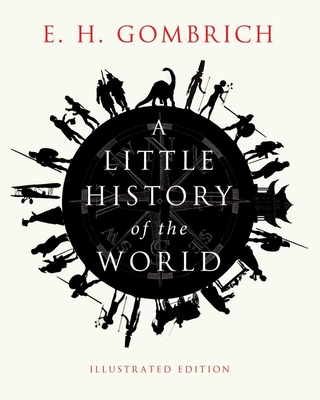

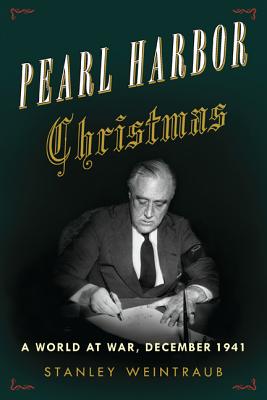
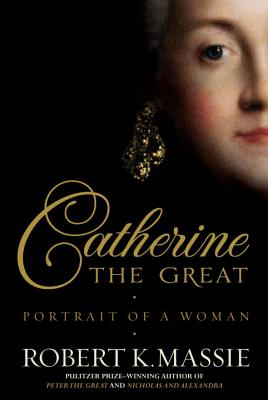
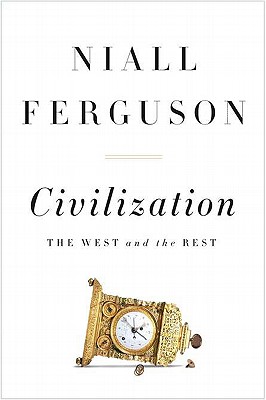
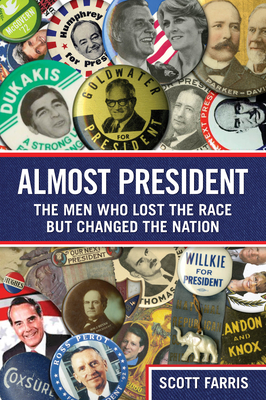
1 comment:
Wonderful choices. This is a great round-up.
Post a Comment